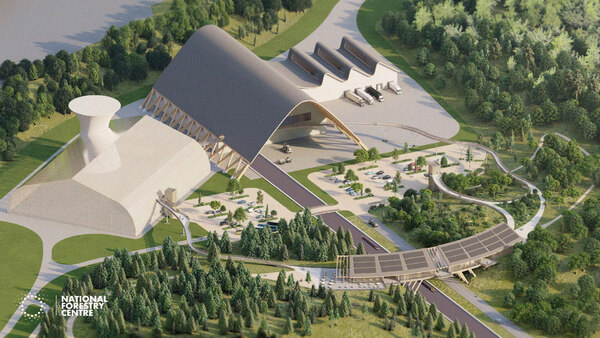The proposal for a National Forestry Centre aims to bring social, economic and environmental benefits to the M58 area, Skelmersdale and the Northern Powerhouse. Converting previously unproductive monoculture arable crop land, by creating a framework for afforestation and a sustainable forestry industry, CLT production, which would be the first of its kind in the UK. The system would be emulated across the region, with the goal of reaching the UK government’s goal of net zero carbon by 2050. A recent change in the UK’s agricultural policy post Brexit, has enabled this project to be economically viable for farmers.
Three forestry techniques were devised each focusing on a different goals. Mapping and research carried out in ST1 and ST2 guided the creation of the 3 tree species mixes most suited to each goal. An algorithm produced an optimal planting map for these mixes based on soil type and proximity to residential areas, farms and roads. This planting map would direct drone planting devices to maximise efficiency.
Intense forestry techniques providing economic gain, felling for lumber used in CLT production, along with the proposal of new waterways connecting various forestry zone to the factory would allow for efficient transportation of the raw material.
Extensive forestry techniques with continuous cover felling would facilitate social activities within the forest, nature trails, foot & bike paths, high ropes and educational opportunities.
Reserve forestry technique maximizing environmental benefits, with a densely planted tree mix creating biodiverse habitats. A blend of species that are known to have CO2 and pollution particulate capturing characteristics, with the addition of CO2 arrays emitting higher levels into their canopies in order to maximize the tree’s uptake, benefiting the environment.
The visitors centre would educate and showcase the three techniques while allowing visitors to follow the process from seedling to end product.


